
It is not impossible that the Northern region may still be affected by storms in the final stages of the season. Photo source: VNA
Since the beginning of September 2025, dangerous natural disasters such as "storm on storm", heavy rain with terrifying thunder and lightning, floods and landslides have occurred continuously, causing serious human and economic losses. This shows the extreme and harsh nature of climate change.
Sharing with reporters of VietnamPlus Electronic Newspaper about the weather and natural disaster situation in the remaining period of 2025, Associate Professor, Dr. Mai Van Khiem - Director of the National Center for Hydro-Meteorological Forecasting (Department of Hydrometeorology), said that natural disasters will continue to develop complicatedly.
Heavy rain, landslides and cold
- Could you please give your opinion on the hydrometeorological trend in the last months of 2025? What types of natural disasters need special attention?
Associate Professor, Dr. Mai Van Khiem : In the last months of 2025, weather and hydrological forecasts will have many complicated developments.
First, with ENSO (a phenomenon that refers to both El Nino and La Nina, related to the oscillation of air pressure between the two coasts of the Eastern Pacific Ocean and the Eastern Indian Ocean) still maintaining a neutral state but leaning more towards the La Nina phase or there will be a short, weak La Nina period.
With the above meteorological trend, storms or tropical depressions are still active and continue to affect our country. It is forecasted that from now until the end of 2025, there will still be about 2-4 storms and tropical depressions affecting the East Sea, of which about 1-2 storms are likely to directly affect our mainland.
According to the climate law, October-November and the first half of December are the months when storms most affect the Central region. However, under the impact of climate change, natural disasters are increasingly unusual, and it is not impossible that the Northern region may still be affected by storms in the late season.
Therefore, both the Central and Northern regions need to be especially cautious in the coming time. Especially in the Central region, from Quang Tri to Lam Dong , storms and tropical depressions are likely to interact with the early cold air of the season, causing heavy rain in the Central region, accompanied by heavy rain causing floods, flash floods, and landslides in mountainous areas.
In addition, from around October 2025, cold air waves will begin to affect. From November onwards, the cold air may increase in intensity. At the end of the year, the cold air will be more active, with the risk of severe cold, frost, and frost in high mountainous areas.
Therefore, people need to pay special attention to storms, heavy rains, flash floods, landslides, urban flooding and cold weather to proactively prevent and minimize damage.

Associate Professor, Dr. Mai Van Khiem - Director of the National Center for Hydro-Meteorological Forecasting. Photo: BNNMT
Disaster forecasting faces many difficulties
- We have focused a lot of resources on forecasting and early warning of natural disasters, but the damage caused by natural disasters is still very large. In your opinion, what difficulties and challenges are we facing in natural disaster prevention work today?
Associate Professor, Dr. Mai Van Khiem : In recent years, we have made a lot of progress in forecasting and early warning work, but in reality there are still some limitations, especially with highly volatile types of natural disasters.
For example, in storm intensity forecasting, we have improved the quality of forecasting the path. However, the problem of storm intensity forecasting is still a difficult problem for all meteorological scientists in the world, especially forecasting storm intensity 3-5 days in advance.
Or for small-scale natural disasters (such as thunderstorms, tornadoes, lightning, flash floods and landslides), warnings can only be given 1-6 hours in advance; or for localized heavy rain, this is also a difficult phenomenon to forecast.
In addition, the transmission of forecast and warning information to people in remote areas is also limited. Especially when there are major storms and floods, it can cause power outages and communication loss. Meanwhile, the disaster prevention infrastructure in some places is still weak, lacking resources for synchronous investment.
In particular, there are still cases of subjectivity in responding to natural disasters.
- Based on the above reality, what solutions has the National Center for Hydro-Meteorological Forecasting proposed to contribute to more professional prevention and safer adaptation, thereby contributing to reducing damage that may be caused by natural disasters?
Associate Professor, Dr. Mai Van Khiem : We propose to continue modernizing monitoring technology and continue to increase the number of monitoring points.
In particular, continue to develop forecasting models, apply AI to operations, and improve analytical capacity to provide news closer to reality, especially for extreme events.
Next is to strengthen the diverse communication system, ensuring that warnings are communicated quickly and easily to people in vulnerable areas; strengthen coordination between hydrometeorological agencies with local authorities, response forces and the media to promptly convert forecast information into specific actions.
At the same time, focus on training, improving response skills for the community and incorporating disaster prevention knowledge into educational programs.
With these synchronous solutions, disaster prevention work will gradually become more professional, helping the community adapt safely and reduce damage.
Comprehensive innovation of forecasting and warning capacity
- In the current context, in your opinion, what is the most urgent and effective solution to respond to climate change and extreme weather events?
Associate Professor, Dr. Mai Van Khiem : In my opinion, the most fundamental and urgent solution today is to improve forecasting and early warning capacity combined with enhancing community adaptability. In particular, it is necessary to modernize monitoring technology, increase station density, and strengthen ocean observations (add Radar at sea, increase atmospheric reconnaissance).
On that basis, we can completely synchronize data and develop forecasting models to closely monitor unusual developments, while building a system to transmit information quickly and easily to people.
Along with that is investment in sustainable disaster prevention infrastructure, development planning associated with climate change adaptation, and raising awareness and response skills of the whole society. Information must be brought to the community early, promptly and proactively to reduce damage caused by climate change and extreme weather events.
- In the long term, what solutions will the National Center for Hydro-Meteorological Forecasting continue to have regarding technology, forecasting methods, and early warning; as well as what recommendations will it make to improve the effectiveness of community-based disaster risk management?
Associate Professor, Dr. Mai Van Khiem : We will focus on implementing a comprehensive innovation plan to improve forecasting and warning capacity and effectively serve the work of natural disaster prevention, control and sustainable development.
The focus of the plan is to continue effectively implementing Resolution No. 57-NQ/TW of the Politburo on breakthroughs in science and technology development, innovation and national digital transformation.
The hydrometeorological agency has identified the industry's major science and technology problem as: "Mastering artificial intelligence (AI) technology in hydrometeorological forecasting, building a comprehensive AI system for multi-scale hydrometeorological forecasting with high accuracy and automating forecasting operations."

The central area of Thai Nguyen province is deeply submerged in floodwaters. Photo: Pham Tuan Anh/VNA
We also determined to prioritize the application of modern technologies such as artificial intelligence (AI), big data, and the Internet of Things (IoT) to the entire hydrometeorological business process, from monitoring, data collection and processing, to analysis, forecasting, and communication.
Mastering the above technologies not only contributes to improving the accuracy and automation in professional work, but also opens up the direction for developing a smart, multi-scale forecasting system that meets the requirements of serving people, authorities and economic sectors in the context of increasingly complex climate change.
In addition, we also recommend that localities promote community-based disaster risk management through building a two-way information network between forecasting agencies and grassroots levels, organizing training and drills so that people can be more proactive in response.
In my opinion, only by closely combining accurate forecasting, effective communication and proactive community participation can we improve the effectiveness of disaster prevention and mitigation.
Thank you very much!
Source Vietnam+
Source: https://baophutho.vn/thien-tai-cuoi-nam-2025-phuc-tap-bac-bo-van-co-the-chiu-anh-huong-cua-bao-240859.htm




![[Photo] Prime Minister Pham Minh Chinh chairs a meeting of the Government Standing Committee on overcoming the consequences of natural disasters after storm No. 11](https://vphoto.vietnam.vn/thumb/1200x675/vietnam/resource/IMAGE/2025/10/09/1759997894015_dsc-0591-jpg.webp)

![[Photo] General Secretary To Lam visits Kieng Sang Kindergarten and the classroom named after Uncle Ho](https://vphoto.vietnam.vn/thumb/1200x675/vietnam/resource/IMAGE/2025/10/09/1760023999336_vna-potal-tong-bi-thu-to-lam-tham-truong-mau-giao-kieng-sang-va-lop-hoc-mang-ten-bac-ho-8328675-277-jpg.webp)
![[Photo] President Luong Cuong attends the 80th Anniversary of the Traditional Day of Vietnamese Lawyers](https://vphoto.vietnam.vn/thumb/1200x675/vietnam/resource/IMAGE/2025/10/09/1760026998213_ndo_br_1-jpg.webp)
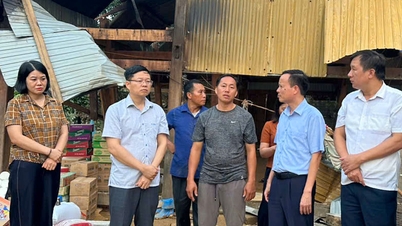






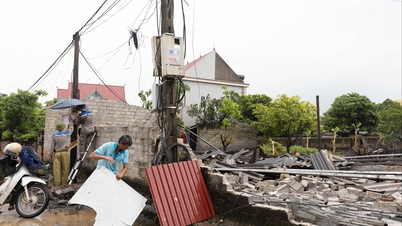

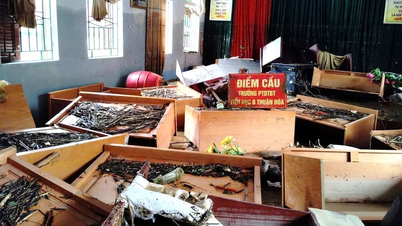








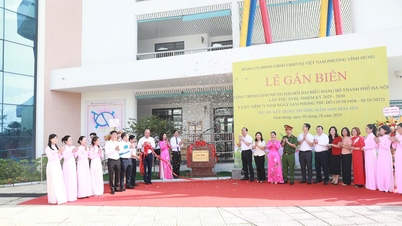




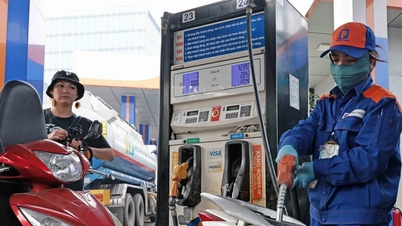

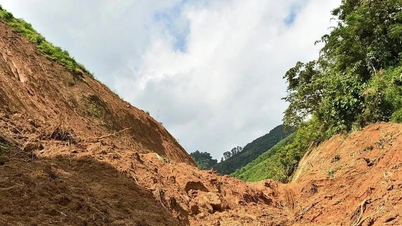
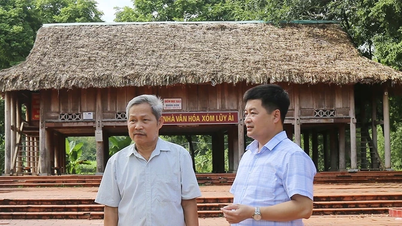

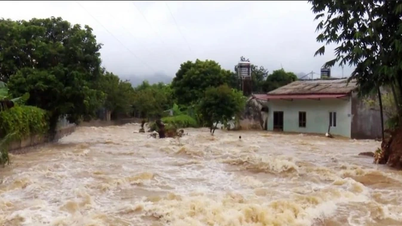

































































Comment (0)